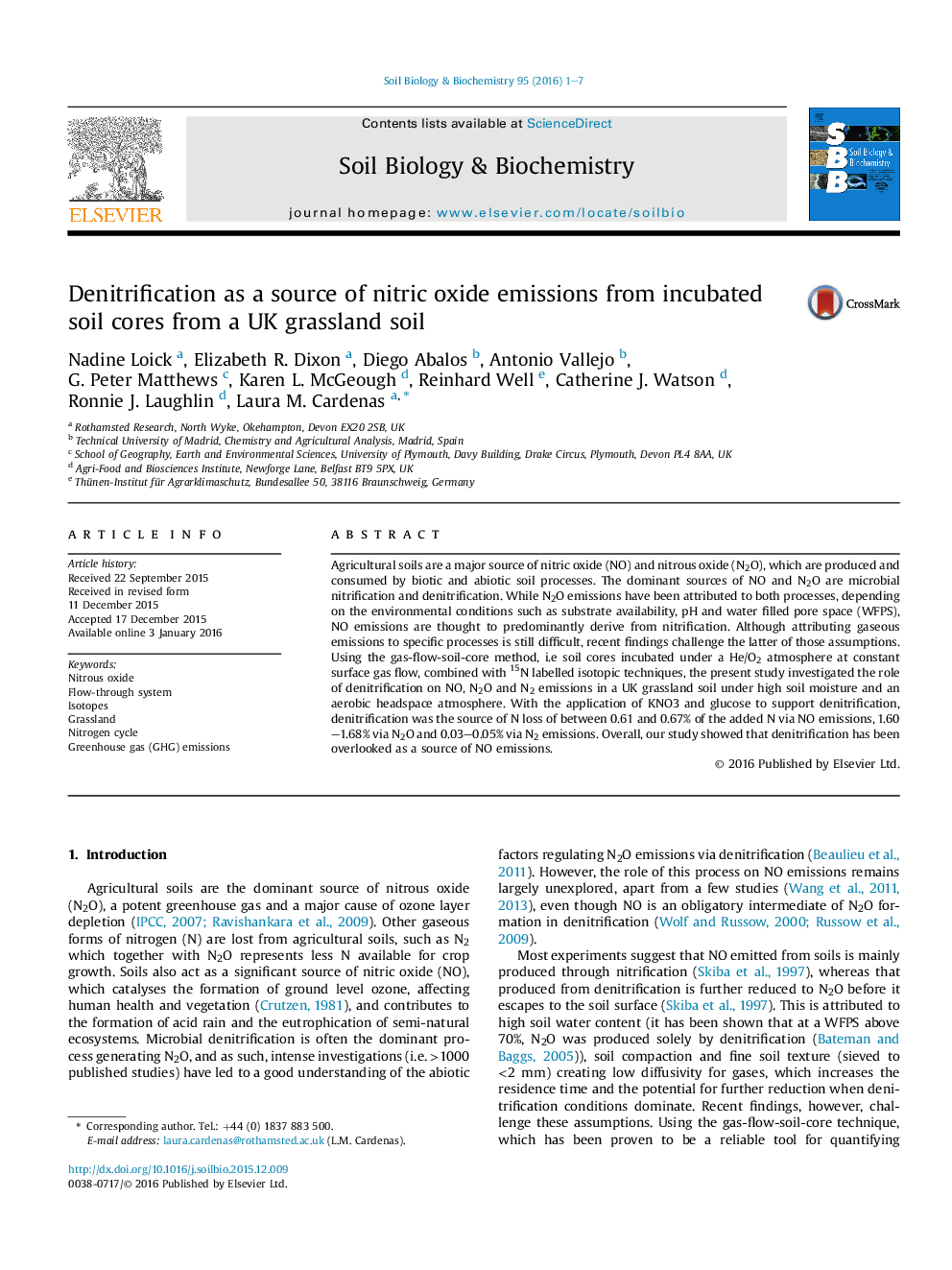| Article ID | Journal | Published Year | Pages | File Type |
|---|---|---|---|---|
| 2024258 | Soil Biology and Biochemistry | 2016 | 7 Pages |
•Between 2.2 and 2.4% NO3−-N lost via gaseous emissions from denitrification at 85% WFPS.•First report of denitrification as source of NO emissions in aerobic headspace.•Majority of N2O emitted (85%) is produced from added N.•Increasing N2O with decreasing NO indicating sequential denitrification reactions.
Agricultural soils are a major source of nitric oxide (NO) and nitrous oxide (N2O), which are produced and consumed by biotic and abiotic soil processes. The dominant sources of NO and N2O are microbial nitrification and denitrification. While N2O emissions have been attributed to both processes, depending on the environmental conditions such as substrate availability, pH and water filled pore space (WFPS), NO emissions are thought to predominantly derive from nitrification. Although attributing gaseous emissions to specific processes is still difficult, recent findings challenge the latter of those assumptions. Using the gas-flow-soil-core method, i.e soil cores incubated under a He/O2 atmosphere at constant surface gas flow, combined with 15N labelled isotopic techniques, the present study investigated the role of denitrification on NO, N2O and N2 emissions in a UK grassland soil under high soil moisture and an aerobic headspace atmosphere. With the application of KNO3 and glucose to support denitrification, denitrification was the source of N loss of between 0.61 and 0.67% of the added N via NO emissions, 1.60–1.68% via N2O and 0.03–0.05% via N2 emissions. Overall, our study showed that denitrification has been overlooked as a source of NO emissions.
